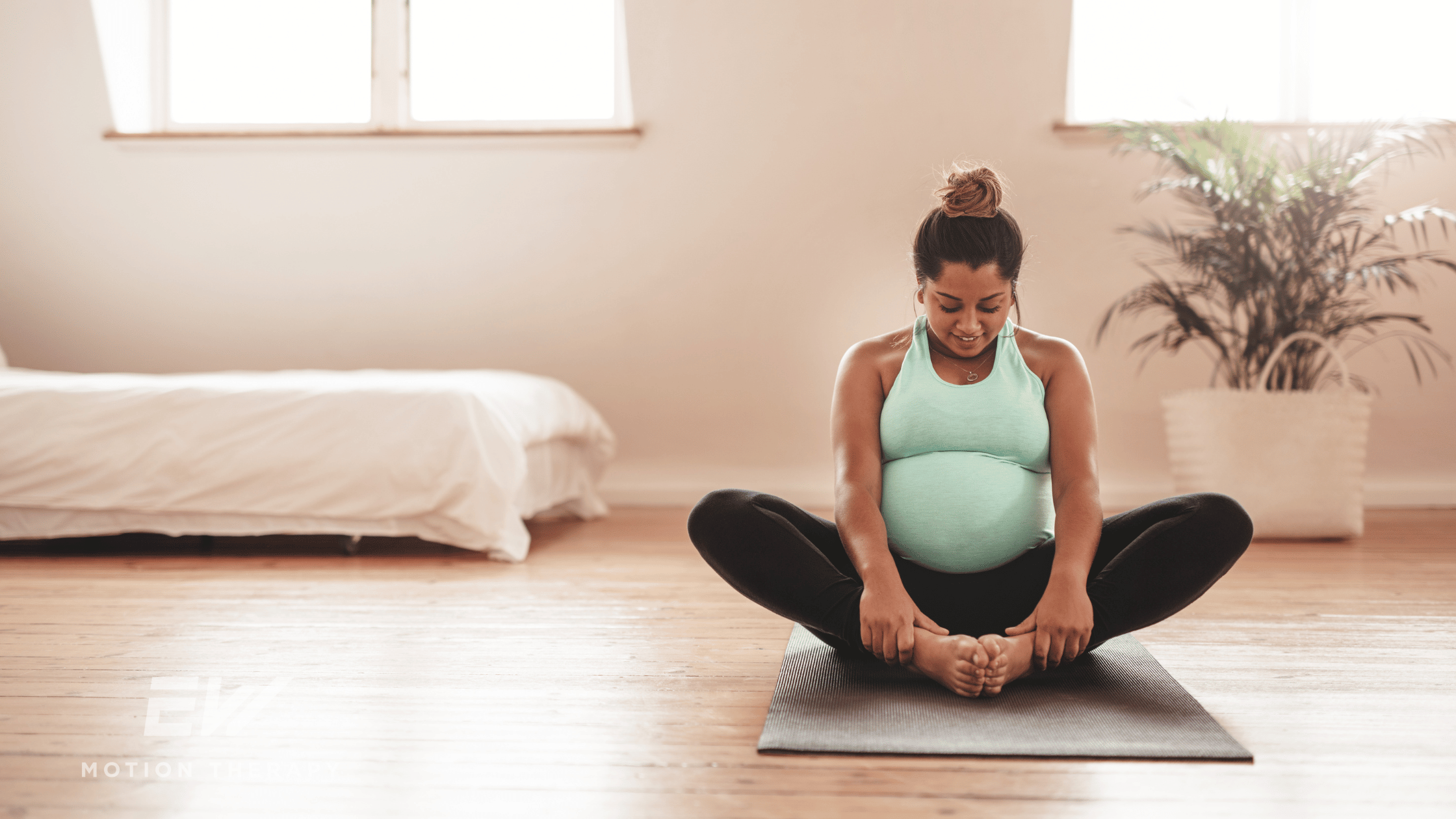Pilates During Pregnancy: Benefits and Modifications For Each Trimester

Licensed Physical Therapist, PT, DPT // Lead EW Yoga Instructor // EW Pilates Instructor // EW Motion Therapy Homewood
Pregnancy is a transformative journey that brings a myriad of changes to a woman's body. As these changes unfold, maintaining physical fitness becomes crucial not only for the mother's health but also for the baby's well-being. One exercise regimen that has gained significant popularity among expectant mothers is Pilates. Known for its low-impact, controlled movements, Pilates offers numerous benefits during pregnancy, and you don’t need any special equipment to start. At EW Motion Therapy, we have multiple Pilates instructors who have worked with pregnant women in every trimester, and they can tailor a Pilates regimen for your unique needs no matter where you are in your pregnancy. You may decide that our Pilates program doesn’t fit your needs, but you can still read this article as we delve into the benefits of Pilates during pregnancy, how your Pilates practice can be modified by trimester, and provide recommendations on finding the best Pilates instructor.
Why Pilates is beneficial during pregnancy
Pilates is particularly well-suited for pregnant women due to its focus on core strength, flexibility, stability, breathing, and posture. Here are some of the key benefits:
Enhanced core strength
Pilates strengthens the deep abdominal muscles, which are crucial in supporting the growing belly. It also activates the transverse abdominals, which wrap around your torso like a corset. A strong core can alleviate common pregnancy-related discomforts such as lower back pain and pelvic instability. A strong core is also excellent preparation for pushing required for a vaginal birth or the recovery of the abdominal muscles after cesarean delivery.
Improved posture
As the baby grows, the mother's center of gravity shifts, often leading to poor posture. Pilates exercises emphasize proper alignment and postural awareness, helping to counteract these changes and reduce the risk of postural pain.
Increased flexibility and muscle tone
The controlled stretching and strengthening exercises in Pilates enhance overall flexibility and muscle tone. This increased flexibility can ease the physical strain of pregnancy and prepare the body for labor and delivery.
Stress relief and mental well-being
The mindful nature of Pilates, with its focus on controlled breathing and precise movements, promotes relaxation and stress relief. This mental aspect is invaluable during pregnancy, helping expectant mothers maintain a sense of calm and well-being. Breath work is also an essential part of the delivery stage and can help create a strong foundation during pregnancy with Pilates.
Pelvic floor strengthening
Pilates exercises often include pelvic floor work, which is vital for supporting the bladder, bowel, and uterus. A strong pelvic floor can aid in pushing, prevent or reduce the severity of incontinence issues, decrease back pain, and aid in postpartum recovery.
Modifying Pilates by trimester
While Pilates is beneficial throughout pregnancy, modifying the exercises to accommodate the changing body and ensure safety is essential. Every trimester, your body produces more relaxin, a hormone that softens and loosens joints, muscles, and ligaments. Because of this, not stretching too much or overexerting yourself is paramount to your and your baby’s safety. Here are some ways Pilates should be adapted for each trimester:
First trimester (weeks 1-12)
Many women can continue their regular Pilates routine during the first trimester with minor modifications. However, it's crucial to listen to your body and avoid overexertion. Focus on:
- Core stability: Gentle core exercises to strengthen the deep abdominal muscles.
- Breathing techniques: Incorporate deep breathing to enhance relaxation and oxygen flow.
- Avoid overheating: Stay hydrated and avoid overly intense workouts to prevent overheating.
Second trimester (weeks 13-26)
As the pregnancy progresses into the second trimester, the body undergoes significant changes, including a shifting center of gravity, and modifications become more necessary:
- Avoid supine positions: After the first trimester, the uterus can compress the vena cava, a central vein that brings blood to your baby. Towards the end of the second trimester, you may need to avoid lying flat on your back to prevent restricted blood flow. If you become uncomfortable or lightheaded, your position should be changed - try standing exercises or using a wedge if lying down.
- Focus on balance: Incorporate exercises that enhance balance and stability as the center of gravity shifts.
- Gentle stretching: Gentle stretching accommodates growing muscles and alleviates tension.
Third trimester (weeks 27-40)
In the final trimester, the focus should be on maintaining mobility and preparing the body for labor:
- Supportive exercises: Use props such as pillows and exercise balls to provide support and comfort during exercises.
- Pelvic floor focus: Continue with pelvic floor exercises to maintain strength and support. Practice both Kegels to contract the pelvic floor muscles and reverse Kegels to relax the muscles.
- Avoid high-impact moves: Opt for low-impact, controlled movements to prevent strain and injury.
Finding the best Pilates instructor for pregnancy
Choosing the right Pilates instructor is crucial to ensure a safe and effective practice during pregnancy. Here are some tips to help you find the best instructor:
- Specialized certifications: Try to find an instructor who is certified in prenatal Pilates, prenatal yoga, or a similar certification. This indicates that they have the necessary training and knowledge to guide pregnant women through their practice safely.
- Experience with pregnant clients: An instructor with experience teaching pregnant clients will be more adept at providing appropriate modifications and understanding the unique needs of expectant mothers.
- Personal recommendations and reviews: Seek recommendations from other pregnant women or healthcare providers. Additionally, read online reviews to understand the instructor's expertise and teaching style.
- Individual sessions: Many instructors offer one-on-one sessions. Take advantage of these to gauge your comfort level with the instructor and their teaching methods.
- Comfort and communication: Choose an instructor with whom you feel comfortable and can communicate openly. It's essential to feel at ease discussing your concerns and asking questions.
Pilates is an excellent exercise option for pregnant women, offering numerous physical and mental benefits. By strengthening the core, improving posture, enhancing flexibility, and providing stress relief, Pilates helps expectant mothers navigate the physical changes of pregnancy with greater ease. Under the guidance of a qualified instructor, modifying the practice according to each trimester ensures safety and effectiveness. With the right instructor by your side, Pilates can be a valuable component of a healthy and enjoyable pregnancy journey. We consider it a privilege to help our pregnant Pilates clients at EW Motion Therapy stay active, reduce pain, and improve mobility at every stage of their pregnancy. To learn more about Pilates, click the button below to download our answers to 20 frequently asked questions.


